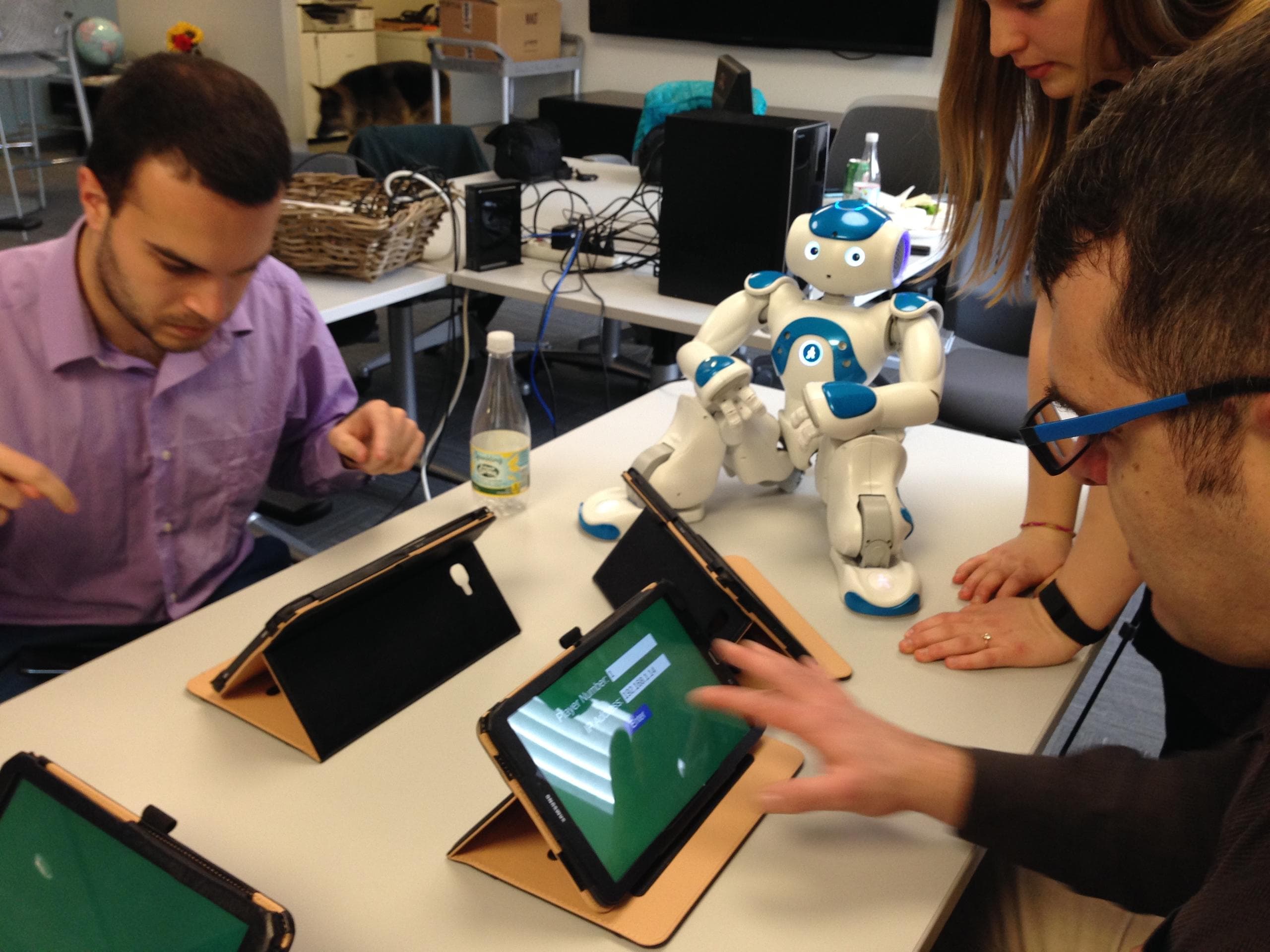Using Robots to Prevent Human Calamities
How can physical robots affect group behavior? By programming humanoid robots to speak and act in particular ways, we can modify how the humans observing the robots treat other humans, enhancing our ability to address collective action problems.
The introduction of machines into our midst is often seen as potentially harming our ability to work together or as risking our personal safety, as with the public’s fears about autonomous vehicles. Our recent work has shown how humanoid robots that speak in particular ways can affect the conversational dynamics of human groups and enhance their satisfaction with their joint problem-solving efforts. Our lab is studying many aspects of such “hybrid systems” composed of humans and machines interacting on the same playing field.
In new work, we hope to show how robots can help people better coordinate actions that they often otherwise coordinate poorly, leading to calamities like stampedes and ineffective evacuations during a disaster. We are building a model of a city and placing human-driven cars within it, that is, miniature cars that are remotely controlled by human drivers. We will study how AI-equipped cars that can also be added to the traffic might enhance the ability of the overall groups to navigate.
Other problems this line of work can address include stampedes in sporting events and religious festivals; slow-moving lines at theme parks; the difficulty of evacuation from buildings during earthquakes and fires; and rush-hour traffic jams. Machines in our midst can be programmed to help us to help ourselves.
